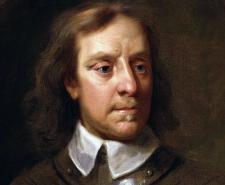
Read more about Mysteries

Bruce’s Timeline of Our World is published by Clink Street Publishing and is the culmination of a 20-year ambition, and five years of research and writing.
65 million years ago, a huge meteorite crashed into Earth creating a massive tidal wave, sending clouds of dust into the atmosphere, blocking sunlight, and dramatically dropping temperatures. The devastating event caused the extinction of 75% of all species, including the dinosaurs.
It took four million years for the Earth to recover, but it DID recover and became a beautiful, unblemished planet. We may have polluted it since, but I have full belief that our planet will find a way to recover from that too.
On 26th July 1945, after Germany had surrendered, two atomic bombs were sent to the Pacific: Fat Man and Little Boy. On 6th August, Hiroshima became the first target and Little Boy was dropped. The temperature immediately after detonation was 7,000 degrees centigrade and 70,000 people were instantly killed.
On 9th August, America launched a plane with the second atomic bomb on board. The original target was a city called Kokura, but haze did not allow for a clear view of the city, so Nagasaki was chosen as a target instead and bombed at 11am. 40,000 people were killed instantly.
During WWI, Rasputin, a self-proclaimed holy man, gained a reputation in Russia as a mystic, prophet and healer. He met and befriended the Tsar and his wife and acted as a healer to their haemophiliac son Alexei. Aspirin had been recently discovered and was likely being prescribed by doctors to Alexei as it was not known then that aspirin was also a blood thinner.
When Rasputin took over the role of healer of Alexei, he refused to let the boy take any normal medicine. By taking Alexei off aspirin, Rasputin unknowingly took away the drug that may have been exacerbating his condition, leading the Tsar and his wife to believe Rasputin really did have healing powers.
In the early 20th century, Franz Ferdinand was the next in line to succeed the Austro-Hungarian throne. In June 1914, accompanied by his wife Sophie, Ferdinand arrived in Bosnia-Herzegovina to inspect the army amidst the turbulent times of the Balkan Wars where Serbia wanted to take control of Bosnia.
Whilst travelling through Sarajevo, Serbian nationalist Nedjelko Cabrinov attempted to murder the couple by throwing a grenade at their car. It missed, injuring some of Ferdinand’s officers. After completing their official business that day, Ferdinand insisted on visiting the injured officers. On the way to the hospital, their driver accidentally took them back via the same route where the morning’s assassination attempt had occurred, an area occupied by Serbian nationalists.
There, Gavrilo Princip, a compatriot of Cabrinov, saw his opportunity and shot both Ferdinand and Sophie. Cabrinov and Princip were both jailed and died in prison of tuberculosis.
Leif Eriksson, a Norwegian raised in Greenland, likely became the first European to set foot on North American soil, almost 500 years before Christopher Columbus. According to legend, Eriksson heard of an Icelandic trader named Herjolfsson who had sailed by the shores of America without disembarking.
Eriksson followed Herjolfsson’s route in reverse, crossed the Atlantic and set foot on what is modern-day Canadian soil. He named it Helluland, Icelandic for ‘Stone Slab Land’. In 1960, archaeologists excavated artefacts supporting the Norse settlement and dated them back to CE 1000.
The Black Death, also known as the Bubonic Plague, occurred from the mid-1340s to the mid-1350s with the main peak occurring in the five years between 1347 and 1352. It was the second great natural disaster to hit Europe after the 1315 famine but was far more acute and deadly, with estimates of 75 million to 200 million dying – possibly 30-60% of Europe’s population.
7. Only six deaths in the Great Fire of London
Started at a bakery in Pudding Lane on Sunday, 2nd September 1666, the Great Fire of London lasted until Thursday, 6th September and swept through the medieval city inside the Roman Wall, destroying almost the whole city including St Paul’s Cathedral.
Although there was substantial damage and destruction to homes and buildings, the actual deaths from the fire were relatively few. It's believed that only six people died during the blaze.
In 1954, Nikita Khrushchev, Premier of the Soviet Union, gave Crimea to Ukraine in celebration of 300 years of unity between Russia and Ukraine. Crimea had been part of Russia for the previous 200 years since the second Russian-Turkish war, which resulted in Turkey officially recognising Crimea as Russian.